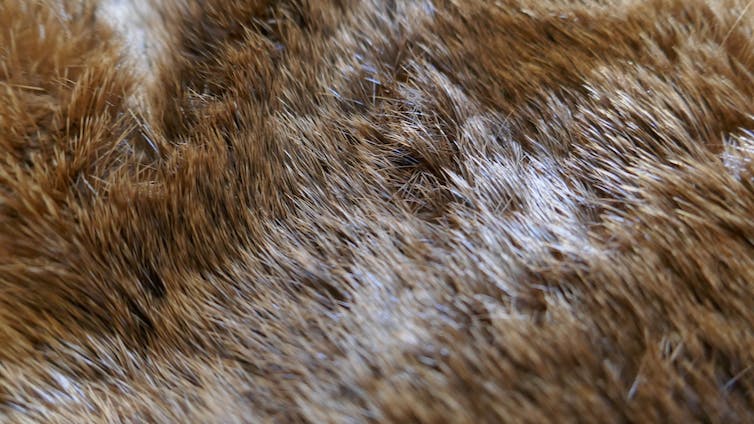Underwater surfaces can get grimy as they accumulate dirt, algae and bacteria, a process scientists call “fouling.” But furry mammals like beavers and otters that spend most of their lives wet manage to avoid getting their fur slimy. These anti-fouling abilities come, in part, from one of fur’s unique properties — that each hair can bend and flex as an animal moves.
Fouling on boats and machinery can be a big problem, and scientists are searching for ways to prevent it.
I’m a mechanical engineer who studies fluid dynamics, or how liquids behave. My team recently published a study showing that fur that was allowed to move back and forth in a flow of dirty water accumulated less than half the amount of dirt as fur that was held stiff from both ends.
While lots of animals have fur that seems to clean itself, semiaquatic mammals have the most grime-resistant, or “anti-fouling,” fur.
Our recent study compared fur fibers from beavers, otters, springbok, coyotes and more using a flow of water containing titanium dioxide, a common additive in cosmetics. Titanium dioxide readily attaches to surfaces like skin. Our team pumped the dirty water over individual fibers in a closed loop for 24 hours, then cleaned the fibers to measure how much titanium dioxide they’d accumulated.
My colleagues and I then used mathematical techniques to combine all of fur’s properties into a single number that predicts its anti-fouling behavior. We considered each fur strand’s ability to bend, how fluid flows over it and other unique features of each species.
We found that the ability to flex was critical for keeping the animal’s fur clean.
Why it matters
Fouling can damage the affected surface. When fur fouls, the arrangement of individual strands across the animal’s pelt is disrupted, and the animal might struggle to stay warm or dry.
Industrial repellent methods used to protect the bottom of ships and the insides of pipes often employ harmful chemicals and consume energy and materials, unlike naturally evolved solutions.
Figuring out how fur stays clean naturally could lead to more environmentally friendly solutions for repelling fouling in the water supply, in marine environments and even in the medical field. Solutions could include surfaces with parts that can flex and move or that have little hairs on a surface.
Research into fur also reveals more about how these mammals have evolved to survive across a variety of environments.
What still isn’t known
Animal fur and the fouling process are both complex, so we still don’t fully understand how all the intricate properties of fur, from texture and length to cross-sectional shape and environmental conditions, contribute to cleanliness.




